Batman Taking On Social Problems
The Dark Knight Tackles Difficult Problems Faced By Society Beyond Just Crime
If you thought the Caped Crusader was only a crime fighter whose fame made him suitable for Batman t-shirts, think again. Batman has become a global symbol of justice and optimism, widely recognized for his crime-fighting abilities. He's also a symbol of hope and justice, and he's not afraid to tackle difficult social issues. In recent times, DC Comics has been updating the Batman legend to correspond with the concerns of a contemporary audience. These narratives have examined topics like racism, gun violence, climate change, and terrorism.
Here are some more details and examples of Batman tackling social problems:
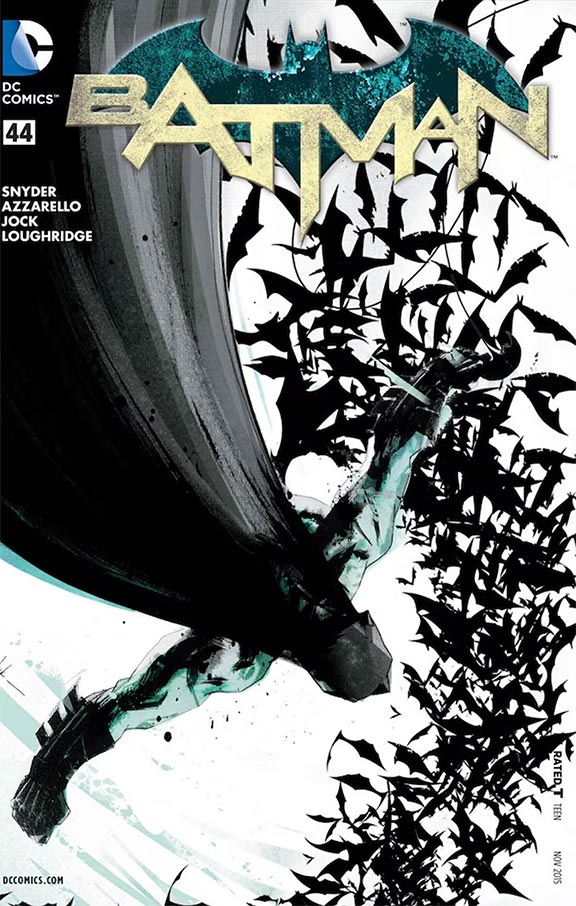
Batman #44
Written by Scott Snyder / Illustrated by Jock
DC Comic Cover Issue #44
Racism:
Batman #44 finds Dark Knight investigating shooting death of black teenager by white Gotham police officer. This was a timely theme, given the racial unrest in the U.S. following the widely protested deaths of Michael Brown, Freddie Gray and others. This issue of DC Comics’ flagship Batman series threws itself headfirst into the agonizing conversations roiling America in 2015 more than a year after Ferguson officer Darren Wilson killed 18-year old Michael Brown. Batman confronts racialized police brutality and its intersection with urban poverty and gentrification. Batman comes to realize he exacerbates these problems in his secret identity as billionaire industrialist Bruce Wayne. “A Simple Case,” the title of issue44, becomes a meditation on the meaning of a rich, white vigilante who attempts to solve intractable urban problems by beating up bad guys.
A number of comics critics said upon the release of Batman #44 that they couldn’t recall rBatman ever addressing institutional racism and its socio-economic dimensions as bluntly as this in the character’s long history of storylines.
Read the 2015 RollingStone article for more insight.
Gun violence:
Gun control has certainly been a running theme in Batman comics throughout the majority of his storylines. He’s an adamant advocate that civilians’ access to firearms should be, at the very least, seriously restricted.

Detective Comics #748
In Frank Miller’s seminal The Dark Knight Returns, Batman orders a gang of teenage allies calling themselves “Sons of Batman” to throw away their firearms. The Sons of Batman or Batboys are a vigilante group of youths inspired by Batman appearing in The Dark Knight Returns in the continuity of Earth-31. Unlike Batman, the Sons of Batman originally used firearms such as shotguns and sub machine guns killing criminals instead of imprisoning them, until Batman decreed guns were the weapons of the enemy and forbid any of them from using them.
The Batmen from the Christopher Nolan film, The Dark Knight, were similar to the The Sons of Batman in that they were a group that was heavily inspired by Batman himself. Yet despite modeling themselves after Batman they also demonstrated that they were perfectly willing to kill criminals despite it being something the real Batman was against.

Sons of Batman
Frank Miller/DC Comics
Batman: I Am Gotham is the first collection of Tom King's run on Batman (Volume 3) as part of DC Rebirth. In "I Am Gotham," Batman is compelled to address gun crime after a calamitous mass shooting in Gotham. As he grapples with this issue, he grasps that he must extend his efforts to combat the violence. He launched an effort to remove guns from the streets, collaborating with law enforcement to prevent offenders from acquiring weapons. The story was acclaimed for its timely representation of gun violence and was beneficial in increasing the understanding of the matter.

I Am Gotham - a five-part Batman storyline
WriterTom King / Illustrator David Finch
Read more about Batman comics and gun control on the website: Gotham Calling
Climate change:
In the Batman Secret Files: The Gardener #1 (by James Tynion IV, Christian Ward, Tom Napolitano) the origins of the mysterious Gardener is examined. One of the revelations is that that one of Gotham City's most infamous figures, Poison Ivy, is not the villain she's been painted out to be. She had the vast power capable of healing a severely damaged environment and maybe even healing divisions between groups of people who thus far have done nothing but tear each other down. Unfortunately, Poison Ivy 's attempts to fix the world only broke her more and more, twisting the beautiful dream she had into something dark and cold.
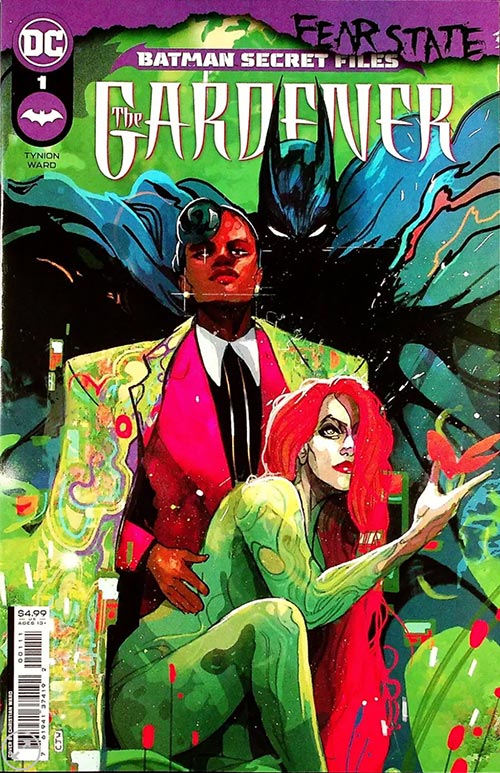
Secret Files: The Gardener #1
Written by James Tynion IV / Illustrated by Christian Ward
DC Comic Cover
Read more in this 2021 article by Amer Sawan published online at CBR.com
Batman's Most Powerful Villain Could End Climate Change - Why Won't He Let Her?
Terrorism:
The second installment of Christopher Nolan‘s The Dark Knight Trilogy about the DC Comics character Batman is not only a superhero tale of good versus evil, but it is a powerful allegory of 9/11 and the war on terror. The September 11th terrorist attacks has had a deep impact on the collective consciousness. The Dark Knight is an excellent example of this process.

Christopher Nolan's The Dark Knight trilogy 2005 – 2012
The Dark Knight movie is laden with the iconography of the war on terror: The Joker is repeatedly referred to as a terrorist. Batman begins to wonder if he is capable of defeating an enemy as indifferent to death and destruction as the Joker without breaking his own personal code, which forbids him to kill. In the end, he uses a city-wide surveillance system which fundamentally violates the basic right to privacy of every citizen of Gotham, in order to find and subdue his adversary. Ultimately, the film seems to be asking the central question of confronting terror. At what point do the exceptional methods required to fight terrorism become a threat to the society which employs them in its own defense? Can the norm be preserved in the state of emergency without destroying it?
In the film's depiction of Batman, an all too human superhero, movie goers may be watching their own conflicted relationship to the war on terror laid bare before their eyes.
Read more in this 2015 movie article by Benjamin Kerstein
Batman's War on Terror
Mental Health:
A book by by Robin S. Rosenberg Ph.D. was published in 2012 with the lengthy title: What's the Matter With Batman?: An Unauthorized Clinical Look Under the Mask of the Caped Crusader
The author delves into the mind of Batman. She examines his problems, "issues," and possible symptoms to determine whether he suffers from any of a variety of psychiatric disorders such as depression, posttraumatic stress disorder, obsessive-compulsive disorder, antisocial personality disorder, and others. Book is available on Amazon.
Some critics say that the Batman comics have some of the best psychological storylines.
Batman: RIP, written by Grant Morrison's / art by Tony S. Daniel, hinges on the more psychological takes of the characters. The story begins with the Black Glove systematically targeting Batman's life and ripping it apart, leaving Batman a junkie on the street, strung out on weapons-grade crystal meth. The story revolves around mind games inside of mind games, a brilliantly psychological take on Batman's war on crime.
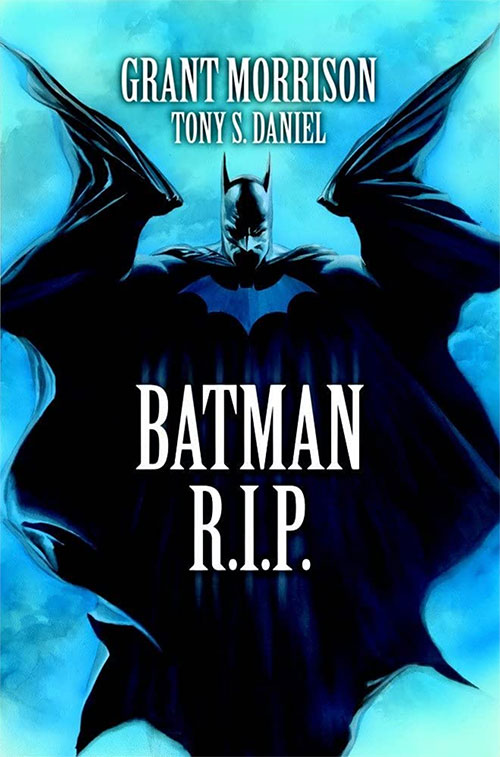
Batman: RIP
Written by Grant Morrison's / Art by Tony S. Daniel
DC Comic Cover
In Batman: Hush, written by Jeph Loeb / art by Jim Lee, they explore how the Riddler and Hush usewhat they know about Batman to manipulate him in many ways. The whole storyline is a multilayered mind game that Batman recognize until the end.

Batman: Hush
Written by Jeph Loeb / Art by Jim Lee
DC Comic Cover
In Batman: The Killing Joke, Written by Alan Moore /art by Brian Bolland, the story reveals a possible origin for the Joker and his psychological torture of Jim Gordon thus trying to justify that what happened to him could happen to anyone. Although sometimes a bit simplistic, the story shows the twin sides of mental illness, and how it makes the sufferer both victim and victimizer.
Batman: I Am Suicide Written by Tom King /art by Mikel Janin
Throughout the storylines of Tom King's Batman (the last issue #85 was in 2019), the Caped Crusader's psychology takes center stage. In Batman: I Am Suicide reveals the truth of who Bruce Wayne is and what Batman represents to him, as a form of long-term suicide by a boy who was destroyed by what happened to him. In addition the writer tackles Bane’s psychology by getting into Bane's head as well and showing readers how what he went through molded him into what he is as well as just showing how similar these two enemies are.

Batman: I Am Suicide
Written by Tom King /Art by Mikel Janin
DC Comic Cover
In Batman: Face The Face Written by James Robinson / art by Don Kramer, like many of the infamous Two-Face's stories, is about Harvey Dent dealing with his mental illness after he was horribly scarred during his time as District Attorney of Gotham City . And though the Harvey Dent has attempted to reform quite a few times over the years for various reasons, he always finds his way back to his Two-Face persona due to his fractured personality, his obsession with the coin, and sometimes even as a result of the Batman’s actions.

Batman: Face The Face
Written by James Robinson / Art by Don Kramer
DC Comic Cover
Homelessness:
Batman: The Cult 1989 Written by Jim Starlin / illustrated by Bernie Wrightson / colored by Bill Wray
Batman: The Cult is a 4 issue mini-series is about Deacon Blackfire, a charismatic shaman who has amassed the city's homeless into an army, one he seemingly uses to fight crime. But in reality, Blackfire has a hidden agenda!
Batman must face the problem of homelessness as Scarecrow, the new bad guy, uses fear gas to frighten Gotham City and causes numerous individuals to become homeless. Batman must employ all of his means to foil Scarecrow and aid the destitute inhabitants of Gotham City.

Batman: The Cult
Written by Jim Starlin / illustrated by Bernie
DC Comics 1989
You Shoulda Seen Him Written by Jim Starlin / Cover artists; Todd McFarlane &Anthony Tollin
Batman #423 is an issue of the series Batman (Volume 1). The story is about three officiers relating their encounters with Batman on one night. The first two officers saw a Batman who was tough, or violent, whereas the third officer related this story: He encountered Batman while pursuing two homeless children. Having heard that Batman was scary and violent, he was worried about how Batman would respond to the children. Batman and the officer sat together with the kids until the kids were comfortable enough to tell their story. They were homeless because they were orphans, and refused to go into the foster system where they would be split up. The officer saw Batman hide a single tear from the children, then hug them and tell them everything was going to be okay. His friend Bruce Wayne would put them up until their other family could be located.

You Shoulda Seen Him
Batman with Homeless Orphans

You Shoulda Seen Him
DC Comic Cover
Police brutality:
Dark Knight III: The Master Race #1.
Co-written by Frank Miller & Brian Azzarello / illustrated by Miller, Andy Kubert, Klaus Janson
The Dark Knight III: The Master Race 2015-2017 is a nine-issue DC Comics limited series. In 2015 shooting death of Laquan McDonald by Officer Jason Van Dyke was a story with ripple effects beyond the court case. The day after the Chicago police officer, Jason Van Dyke, was charged with the first-degree murder DC Comics released the much-anticipated first issue of its latest Batman installment, “Dark Knight III: The Master Race.” Half of the comic is dedicated to scenes of police brutality, depicting a potentially fatal course of events halted by the caped superhero’s interventions.

Dark Knight III: The Master Race #1
DC Comic Cover
Read more in the Vulture article By Abraham Josephine Riesman titled: Batman Just Became a Victim of Police Brutality in the Dark Knight Sequel
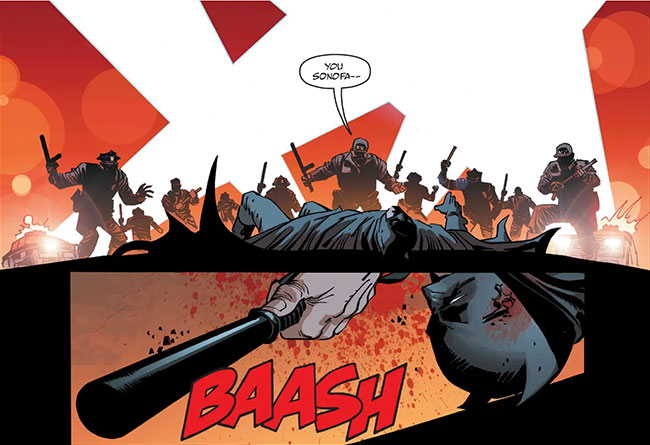
Dark Knight III: The Master Race. Art by Andy Kubert.
Photo: DC Comics
Addiction The Opioid Crisis:
Batman: Venom 1993 Written by Dennis O'Neil & José Luis García-López / Art by Trevor von Eeden
Legends of the Dark Knight (1989) issues #16-20
In this classic Batman tale readers are introduced to the strength-enhancing drug Venom. After Batman fails to save a young girl, he begins taking the drug in order to lift his limitations. However, when the Dark Knight becomes addicted to the substance, his entire life begins to spiral out of control. The drug Venom later goes on to play a major role in the KNIGHTFALL storyline that sees the villain Bane breaking Batman's back.
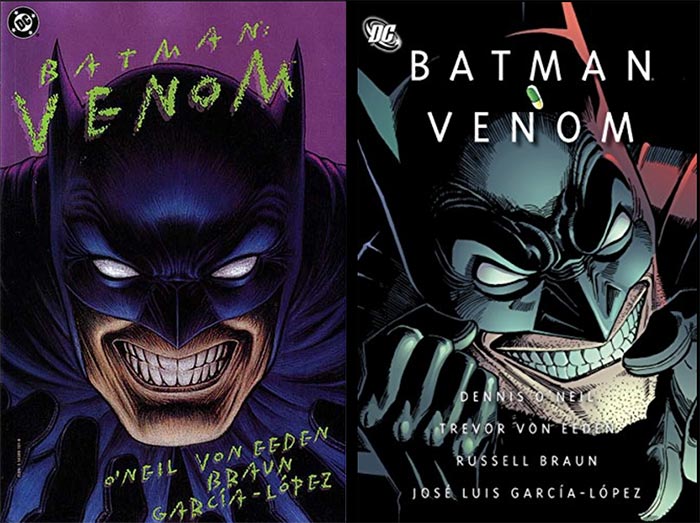
Batman Venom 1st Edition Comic Cover on Left
Injustice:
In the 2012 video game Injustice: Gods Among Us, Batman must deal with the issue of government overreach. After Superman kills the Joker, and becomes a tyrant bent on claiming the world as his own and eliminating all those who would oppose his rule, Batman forms a resistance movement to overthrow Superman's regime. The game explores the themes of power, corruption, and the limits of heroism. The storyline involves the debate surrounding how far super heroes should go to protect the people of the world. The story was so intriguing that it spawned its own prequel comic book, Injustice: Gods Among Us, that takes place in an alternate reality, where Superman descends into villainy following his family's death at the Joker's hands. The Justice League is split by those who put their trust in Superman, establishing the totalitarian One Earth Regime, while Batman forms an insurgency out of the other half of the League to fight back against the Regime.
The story is split into the six years preceding the Injustice: Gods Among Us video game.
For more information about the plots for each year starting with Year Zero – Year Five of Injustice: Gods Among Us along with sequels and spin offs go to this Wikipedia page.

Injustice: Gods Among Us
Video Game
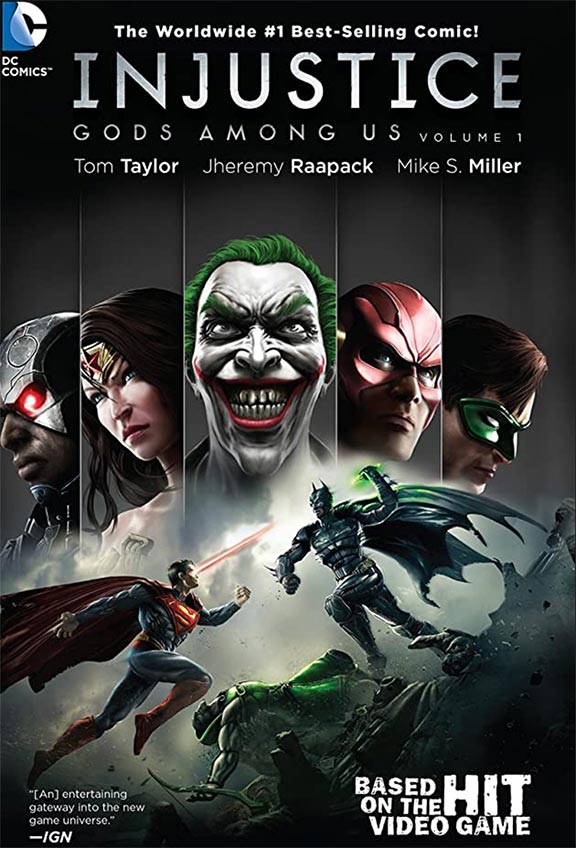
Injustice: Gods Among Us
Written by Tom Taylor (Year Zero–Year Three: #1–7)
Brian Buccellato (Year Three–Year Five: #8–12)
Illustrated by a number of artists including Jheremy Raapack & Mike Miller
DC Comics Cover
Ageism:
From The Dark Knight Returns to Kingdom Come, some of the best Batman stories offer a glimpse into the dark knight as an older man.
The Dark Knight Returns: the Gotham City of Frank Miller
In Frank Miller's graphic novel "The Dark Knight Returns" from 1986, a mid-50’s Bruce Wayne restarts his career as Batman following a ten-year retirement. The narrative delves into the concepts of aging, violence, and the role of superheroes in society.
The story is set in an alternative universe where the superheroes are all retired and only Superman still stands as America’s guardian angel: Gotham City is on the verge of a civil war, while the Cold War itself risks escalating.
This should be agony. I should be a mass of aching muscle, broke, spent, unable to move. And yet, the rain on my chest is a baptism. I’m born again
Saying these very words to himself, a fifty year-old Bruce Wayne decides, once again, to don the Batman cape.
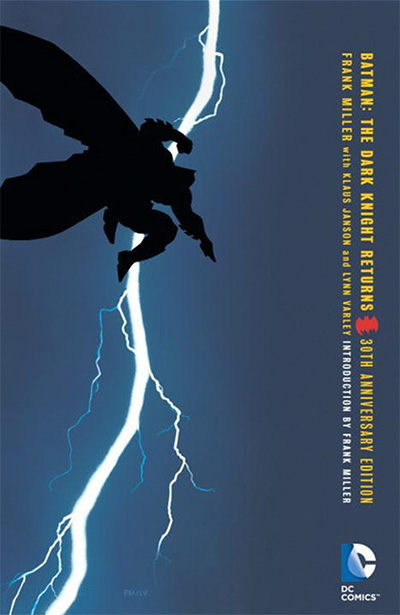
The Dark Knight Returns
The Gotham City of Frank Miller
Kingdom Come is a four-issue comic book miniseries published in 1996 by DC Comics. It was written by Mark Waid and Alex Ross and painted in gouache by Ross. The story is set in an alternate future of the DC Universe. The Batman of Earth-22 is the aged Bruce.
In this alternate universe, Batman's years of over-exertion on his body resulted in it breaking down and forcing him and his alter ego Bruce Wayne to rely on a mechanized exo-suit that is basically a neck/ back brace. His body might have broken down but his Bat-brain is still as sharp as ever.
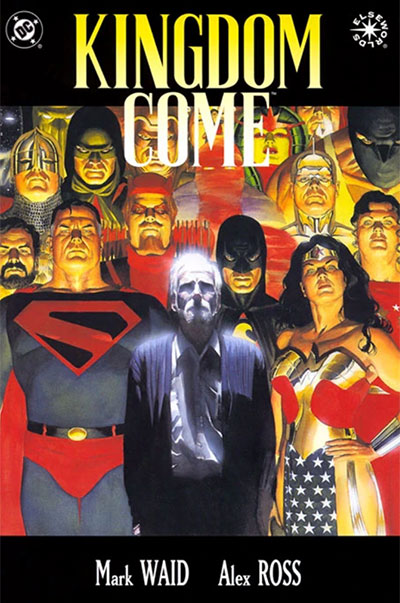
Kingdom Come
Published 1996 by DC Comics

Bruce Wayne in his exo suit
After Batman’s identity is revealed and Wayne’s mansion is destroyed, Bruce moves into the Batcave and uses a legion of robotic Batmen known as Bat-Knights as proxies to protect Gotham for him. Later in the series Batman would eventually utilize a new mechanized exo-suit Batsuit which not only allowed him to move but also gave him super-strength and flight.

Batman in his exo suit
The circumstances surrounding this event are not revealed in Kingdom Come. Following this revelation Bane and Two Face destroyed Wayne Manor. The injuries he sustained defeating them, combined with the years of abuse of his body, forced Bruce to wear a supportive exoskeleton. Without this equipment he would be immobile and helpless.
Even such events did not stop Bruce from continuing with his eternal war on crime. He retreated to the Batcave and constructed a number of robots which could keep Gotham safe in his absence.
There are a number of story lines with an aging Batman/ Bruce Wayne in other media than just Batman comic books.
Batman Beyond is a futuristic animated series, which ran from 1999 to 2001. It features the adventures of teenager Terry McGinnis, who wears an advanced bat suit and works for an elderly, retired Bruce Wayne. For a children’s TV show it seemed rather dark considering it explored the darker side of many Batman projects, while playing on key elements such as emotions, personal relations, fear of the unknown, technological malfunctions and some disturbing psychological elements of Bruce Wayne/ Batman’s character.

Batman Beyond
Animated TV series created by Warner Bros Animation in collaboration with DC Comics
Detective Comics 27 gathers numerous creators of note to pay tribute to the character with a 96-page collection of short stories celebrating Batman and his legacy. It was published in 2014. One of the stories which seems to take place in the Batman #666 timeline is written by Peter Tomasi and features Batman on his actual 75th birthday. He is surrounded by Dick Grayson, Damian Wayne, Barbara Gordon and a very ancient Alfred. In addition there is a sly tribute to The Dark Knight Returns 1986 mini-series written by Frank Miller when it is revealed that Batman ends up going out in costume again to fight crime. We suppose that it is not surprising that Batman, even at 75 years old, is still punishing criminals and scum at 75 and actually seems to be happy.

Batman Celebrating his 75th Birthday
Nature of Good and Evil
What many of the storylines of Batman does better than any other comic book character is explore the depths and nature of evil.
Batman: Arkham Asylum a video game released in 2011 based on the long-running comic book mythos, Arkham Asylum: Batman #258 Written by Denny O'Neil / Artist Irv Novick . The Elizabeth Arkham Asylum for the Criminally Insane has featured prominently in the various continuities of the DC Multiverse.
The video game, Batman: Arkham Asylum, storyline was written by Grant Morrison, and is considered to be one of the definitive texts when looking at how the Batman’s enemies illustrate evil.
"Those people are crazy in there! Legitimately crazy. Sick! They're monsters, and in Arkham they get treated like monsters!"
―Dr. Byron Meredith, former Arkham psychiatrist.
When the Joker takes over Arkham Asylum, a psychiatric hospital housing the most dangerous supervillains in Gotham City. And takes all the staff hostage, Batman enters the hospital with the promise that all the staff will be released. As he moves through the hospital Batman battles both his infamous foes as well as his own inner demons in a twisted psychological exploration of madness and evil.

Batman: Arkham Asylum 2011 Video Game
To learn more, read this Arkham Asylum article.
"In Batman: Year One," a 1987 graphic novel, Bruce Wayne's first year as Batman is explored. The story presents a raw and realistic portrayal of the hero, and examines themes such as violence, corruption, and the nature of good and evil.
The 1988 comic book "The Killing Joke," by Alan Moore's unforgettable meditation on the razor-thin line between sanity and insanity, heroism and villainy, comedy and tragedy.
A deluxe hardcover edition was published in 2008.
Batman’s ideology in this series is one of mercy and justice through violence and intimidation, yet there remains an essence of mercy and ethics since he never kills or maims. Batman constantly attempts to preserve every life. On the other hand, the Joker finds the struggles, joys and life of everyone not exactly funny, but meaningless and laughs at the perception of any valued meaning, a form of moral nihilism. However, both characters are people who suffered from personal and life-changing trauma. It is the response to this trauma that is more important since this is the difference between their two outlooks on reality and where they have taken very divergent pathways not only in their lives, but also in their ideologies. The narrative is a grim and troubling peek into a disturbed psyche that probes into issues surrounding madness, brutality and the nature of evil.

Moore, Alan and Bolland, B. Cover from
Batman The Killing Joke. Graphic Novel. DC Comics
For a more in depth look read this article by Soujanan.Muraleethar: Batman The Killing Joke: Beyond Good and Evil
The Long Halloween 1996-1997 13-issue comic book limited series written by Jeph Loeb.
The storyline is multi layered with many different parallels between its characters and plots that it blurs the lines between vigilantism and justice. The Long Halloween is about Harvey: the tale of a good man gone bad, and how close to bending line between good and bad we all walk. The main characters, Harvey Dent, Batman and Jim Gordon, police commissioner plot to take down Carmine Falcone, a man who answers to no one, but has ties to the major crime families in Gotham. Meanwhile there is a serial killer running around in Gotham who only kills only those connected to the Falcone case such as consultants, family members, other crime bosses. The murders strangely coincide with obscure holidays. While Batman and Jim Gordan struggle to maintain their promise to only bend the law, each begins to question what they know, who they know, and what they are even doing. As the storyline comes to a close, the line between good and evil disappears and those that choose to back evil offer excuse they need to justify their actions. The Long Halloween reveals the cost the psyche pays for the prolonging of horror, and nightmarish behavior. One can have the best of intentions and still find themselves in hell. It doesn’t take much to slip over that edge. Good men and women died in the line of duty due to the poor judgement of a man in a mask, an individual who saw that something couldn’t be done with the law and chose to act above it. It’s no wonder Christopher Nolan based so much of his Batman trilogy on this novel.

The Long Halloween
DC Comic Cover
~~~~~
These are just some examples of how Batman storylines have been used to explore social ills. The Batman figure is intricate and multi-layered, and his storylines by numerous writers have been used to explore a wide range of issues enabling Batman to become a more relevant and relatable character for a new generation of readers.
DC Comics has been modernizing the Batman myth to reflect the concerns of a contemporary audience. These narratives have examined difficult social issues, and they have helped to start conversations about these issues in the comic book community. These tales have also assisted in transforming Batman into a more meaningful character for contemporary readers.
It is noteworthy to remember that some of these stories have not been well-received by fans. Some supporters have voiced disapproval toward DC Comics for attempting to inject politics into Batman, and they have contended that instead of trying to make a point politically, the company should rather focus on telling good stories. Nevertheless, others have commended DC Comics for addressing difficult social issues, and they have argued that these narratives render Batman a more pertinent and relevant figure.
In the end, it is ultimately up to each reader to assess whether or not they enjoy these stories.